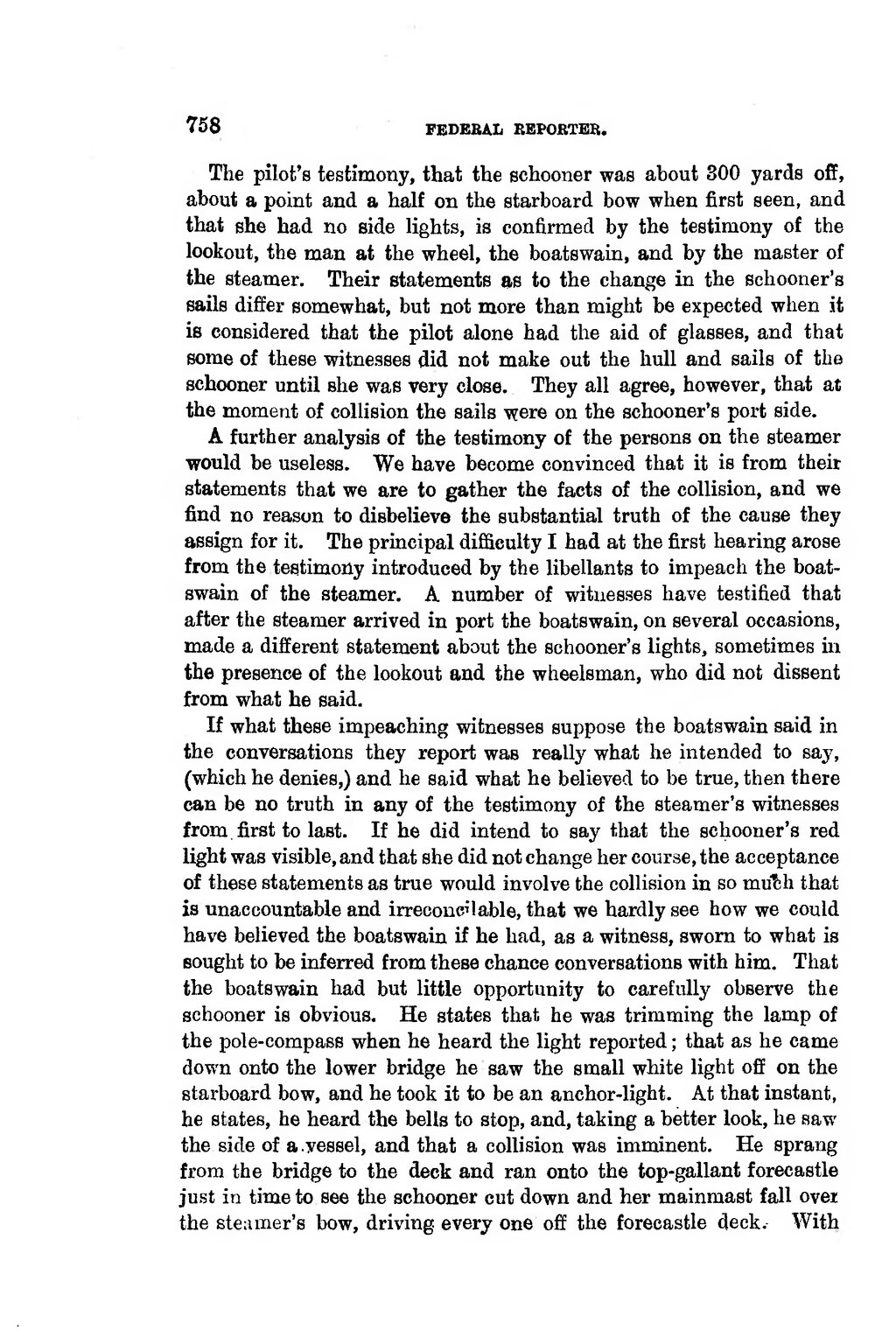758 FEDERAL REPORTBS. �The pilot's testimony, that the schooner was about 300 yards off, about a point and a half on the starboard bow when first seen, and that she had no side lights, is confirmed by the testimony of the lookout, the man at the -wheel, the boatswain, and by the master of the steamer. Their statements as to the change in the schooner's sails differ somewhat, but not more than might be expected when it is considered that the pilot alone had the aid of glasses, and that some of these witnesses did not make out the hull and sails of the schooner until she was very close. They all agree, however, that at the moment of collision the sails were on the schooner's port side. �A further analysis of the testimony of the persons on the steamer would be useless. We have become convinced that it is from their statements that we are to gather the facts of the collision, and we find no reason to disbelieve the substantial truth of the cause they assign for it. The principal difficulty I had at the first hearing arose from the testimony introduced by the libellants to impeach the boat- swain of the steamer. A number of wituesses have testified that after the steamer arrived in port the boatswain, on several occasions, made a different statement about the schooner's lights, sometimes in the presence of the lookout and the wheelaman, who did not dissent from what he said. �If what these impeaching witnesses suppose the boatswain said in the conversations they report was really what he intended to say, (which he denies,) and he said what he believed to be true, then there ean be no truth in any of the testimony of the steamer's witnesses from first to last. If he did intend to say that the schooner's red light was visible, and that she did not change her course, the acceptance of these statements as true would involve the collision in so mutih that is unaccountable and irreconc^able, that we hardly see how we could have believed the boatswain if he had, as a witness, sworn to what is sought to be inferred from these chance conversations with him. That the boatswain had but little opportimity to carefully observe the schooner is obvious, He states that he was trimming the lamp of the pole-compass when he heard the light reported ; that as he came down onto the lower bridge he saw the s mail white light off on the starboard bow, and he took it to be an anchor-light. At that instant, he states, he heard the bells to stop, and, taking a better look, he saw the side of avessel, and that a collision was imminent. He sprang from the bridge to the deck and ran onto the top-gallant forecastle just in timeto see the schooner eut down and her mainmast fall over the steiuner's bow, driving every one off the foi-ecastle deck. With ��� �
Page:Federal Reporter, 1st Series, Volume 10.djvu/770
This page needs to be proofread.
